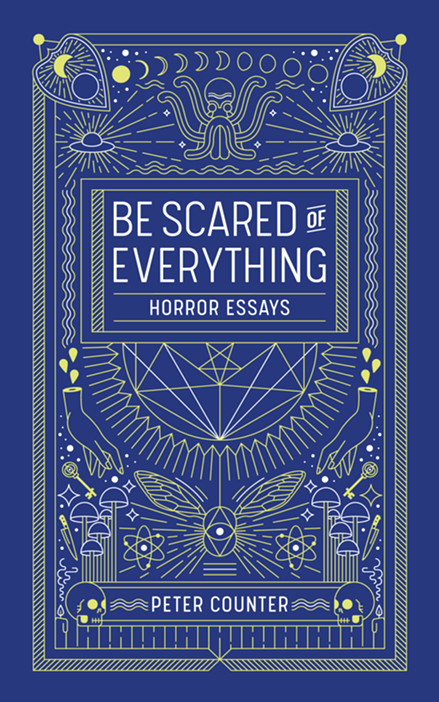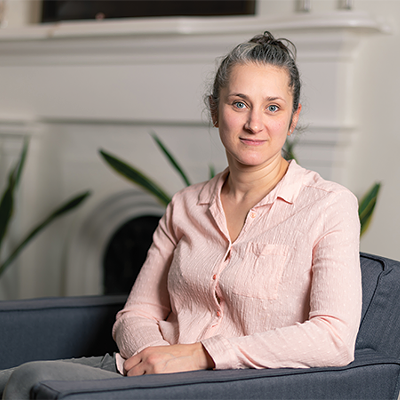What awaits inside from the Halifax-based culture and technology writer are essays on everything from Ouija boards to how best to kill time while wandering around the town of Salem. Here, to celebrate the book's release (and Halloween) we're sharing an excerpt.
They say you don’t know what you’ve got till it’s gone, but that doesn’t really apply to life as a whole. We live in the middle of a story, ignorant of our beginning and ending, bordered by the dual abysses of pre-birth and death. Life is all we have and, because we can’t contrast our experience with its absence, its value is unknowable. That’s what makes life a horror show.
The best horror stories don’t take us into the truly unknown. Instead, they show us the limits of sensory experience, making us aware of the border between humanity and naught so we can better appreciate our toil, anguish, and frailty. Like life, horror begins with oblivion, is animated by human resistance to that terrible lifelessness, and finally urges us to accept death as inevitable.
The first act of a horror story reminds us that we can be annihilated. It presents us with ruin: an overgrown graveyard, an abandoned house, the eroded remains of a once great city, a corpse—anything that evokes futility. The titular mansion from William Hope Hodgson’s The House on the Borderland is abandoned when two editors discover it. The narrator of H. P. Lovecraft’s At the Mountains of Madness arrives at the headquarters of an Antarctic expedition only to find “frightfully mangled” human and canine remains, the camp’s scientific implements and resources wasted on bloody human vacancy. In Scream, Drew Barrymore, despite her high billing and prominent position on the movie poster, is transformed from babysitter to tree ornament before the title card. In all of these cases, something had a function and then, thanks to the absence of life, it’s subject to weather.
Under that shadow of human erosion in act one, every subsequent human action in a horror story becomes exultant, because nothing says “I love life” like desperately clinging to it as you hide, cry, and bleed. Horror protagonists assert authority by applying human reason and ingenuity to their dire circumstances, even when said circumstances defy any rational explanation. In Aliens, humanity sends the marine corps to fix an elemental problem by deploying high-tech weaponry and military tactics. In The Ring, tape dubbing is used to appease the vengeful spirit of a drowned girl who kills the viewers of her haunted VHS chain letter. In End of Days, Arnold Schwarzenegger literally tries to murder the actual devil with a grenade launcher. Countless humans self-mutilate to keep their lives in the Saw films, because digging out your own eye to retrieve a surgically implanted key that can remove the reverse bear trap in your mouth is apparently preferable to whatever awaits those poor souls who don’t have the grit to maim themselves. Given the gruesome means by which horror protagonists are willing to suffer as they flee death, it’s indisputable that they adore living.
Even boring lives are worth celebrating. In M. Night Shyamalan’s The Sixth Sense, Bruce Willis plays the rare character who is both annihilated in act one and resists ruination in act two. Famously, after being shot to death in his own bedroom, Willis’s character, Malcolm Crowe, is unable to move on. He wants to live so badly that he remains on Earth, repressing knowledge of his ghostly status. Crowe continues to work as a child psychologist, attends dinners with his wife, who he believes is having an affair, and generally endures a dull, angry life punctuated by the occasional moment of low-key creepiness.
Crowe’s inability to fully pass away in The Sixth Sense illustrates horror’s innate joie de vivre. Even a shitty, lonely life is preferable to death because at least it’s known to us. Stories function through empathy, and we can’t empathize with the dead. That’s why, when Willis’s character completes the horrific arc by accepting that he must let go of his familiar existence, he just disappears into white light. Shyamalan is confronted by the same border as Malcolm Crowe—the end of knowable human experience—and so must stop short of the unimaginable. Even our wildest inventions are confined to what our five living senses can transmit.
Acceptance of oblivion is where horror ends. It can’t go further because the shape of horror is universal and analogous to life. Even if we escape Jason Voorhees, Michael Myers, or Freddy Krueger; even if we kill the aliens, murder the devil, or wash away the curse of the evil videotape; even if we cling to our crumbling grey life and keep our child psychology practice afloat, death eventually finds us.
Be Scared of Everything is out now via Invisible Press.













